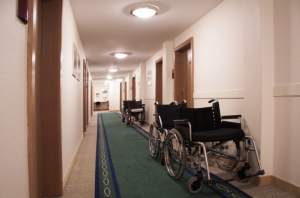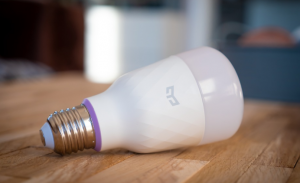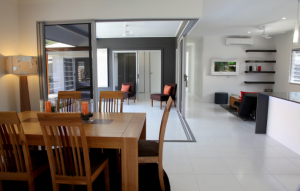
Freedom of working is for everyone, including for people with disabilities. They have the right to feel convenient and fair when it comes to working. That said, it is essential to have a company website and office space that are ADA-compliant. The look of ada compliant website may be different from other regular websites but it is very helpful for them. Aside from website design, we should also design the office space to be more ADA-compliant.

Configuring your workstation or workspace for you is essential to working well. If you have a physical disability, it is perhaps even more important that your workstation is adapted to your needs and other reasonable adjustments are made so that you can be equally comfortable and effective. In this article, let’s take a look at how to create an ADA-compliant office space.
Install Accessible Office Desks
 The most basic of all office furniture, your desk is where you may spend 8 hours a day, 5 days a week writing reports, answering phone calls, handling emails, and holding meetings, so it makes sense to start by making your desk as comfortable as possible. You don’t have to sit at a pre-designed deck just because it’s there. If it’s too high, ask your human resources department to submit a request to lower it. If you have back problems, ask for a desk. If it doesn’t give you enough room to park your wheelchair under it, ask for another option.
The most basic of all office furniture, your desk is where you may spend 8 hours a day, 5 days a week writing reports, answering phone calls, handling emails, and holding meetings, so it makes sense to start by making your desk as comfortable as possible. You don’t have to sit at a pre-designed deck just because it’s there. If it’s too high, ask your human resources department to submit a request to lower it. If you have back problems, ask for a desk. If it doesn’t give you enough room to park your wheelchair under it, ask for another option.
Buy Comfortable Chairs
Remember to find a chair that fits your desk. There are many handicap-accessible seating options that you should get. First, some chairs are adjustable in height or depth so that your seat will work with the desk support you choose. Also, you need adjustable armrests that can go up or down depending on your height. Chairs should be easy to adjust depending on whether you get in and out of your wheelchair, or if you want a secure or sturdy seat that doesn’t stick out from underneath. Finally, make sure your chairs have a seat tilt so you can set the perfect angle for your body.
Set Up the Desktop Computer
 Many companies offer this for free or cover the cost of any necessary adjustments. You can also have your doctor perform the exam and request a doctor’s note based on the evaluation, in case your work needs to be submitted for insurance purposes or to cover any costs. There are many, many computer options to choose from.
Many companies offer this for free or cover the cost of any necessary adjustments. You can also have your doctor perform the exam and request a doctor’s note based on the evaluation, in case your work needs to be submitted for insurance purposes or to cover any costs. There are many, many computer options to choose from.
If your workplace provides you with a laptop (or you use yours to work at home), consider a lightweight option that makes it much easier for you to commute. In case you’re using a desktop version, remember that there are unlimited options for different monitor variations. Remember that it is not worth straining your neck, not being able to see well, or bending over to make your personal computer work for you.
Consider Having Several Open Spaces
Space is often the last thing many companies consider when creating an accessible work area. There needs to be plenty of distance between workstations so that wheelchairs or freedom devices can reach from all angles. Just because a workstation or workspace may be accessible from one side doesn’t mean it works or is better from all angles. You can also think about the turning radius of the block area. While people in wheelchairs or those with mobility aids may find it easy to get in and out of their desks, consider whether the employee can turn around or is likely to be constructed in their area. Cramped spaces can lead to awkward encounters with coworkers and frustrating interactions with customers.
Install Nonslip Surfaces
Finally, consider the flooring that will be installed underneath employee workstations. Disability flooring includes non-slip, easily maneuverable surfaces. This usually means a hard-surface carpet that is easy to roll up so that a chair can be moved quickly. You need to make sure that all wiring in the workplace is also clear, not only to increase accessibility but also for independence issues.…



 The most obvious home automation technology to mention is lighting control. The ability to control lights using a remote control or smartphone app is a fantastic tool for those who have difficulty with mobility or reaching soft buttons. A straightforward solution that could be useful for those who have limited vision would be to provide a very small light sensor and low-power LED light to their switches. This can be employed to illuminate the switches themselves when it starts to get dark so that they can be found and used easily.
The most obvious home automation technology to mention is lighting control. The ability to control lights using a remote control or smartphone app is a fantastic tool for those who have difficulty with mobility or reaching soft buttons. A straightforward solution that could be useful for those who have limited vision would be to provide a very small light sensor and low-power LED light to their switches. This can be employed to illuminate the switches themselves when it starts to get dark so that they can be found and used easily. For people in wheelchairs and others with limited mobility, opening doors can be a big deal. Sure, it’s possible, but it’s difficult, which is why an automatic opening system can easily be fitted to any door you have on your premises. In a home environment, an automatic door is slightly different than what most of us experience in our daily lives at entrances to public buildings, stores, offices, etc. This probably wouldn’t work so well in your home because you could choose to approach your door without going through it, so you don’t need it to close and open all the time for no reason.
For people in wheelchairs and others with limited mobility, opening doors can be a big deal. Sure, it’s possible, but it’s difficult, which is why an automatic opening system can easily be fitted to any door you have on your premises. In a home environment, an automatic door is slightly different than what most of us experience in our daily lives at entrances to public buildings, stores, offices, etc. This probably wouldn’t work so well in your home because you could choose to approach your door without going through it, so you don’t need it to close and open all the time for no reason.